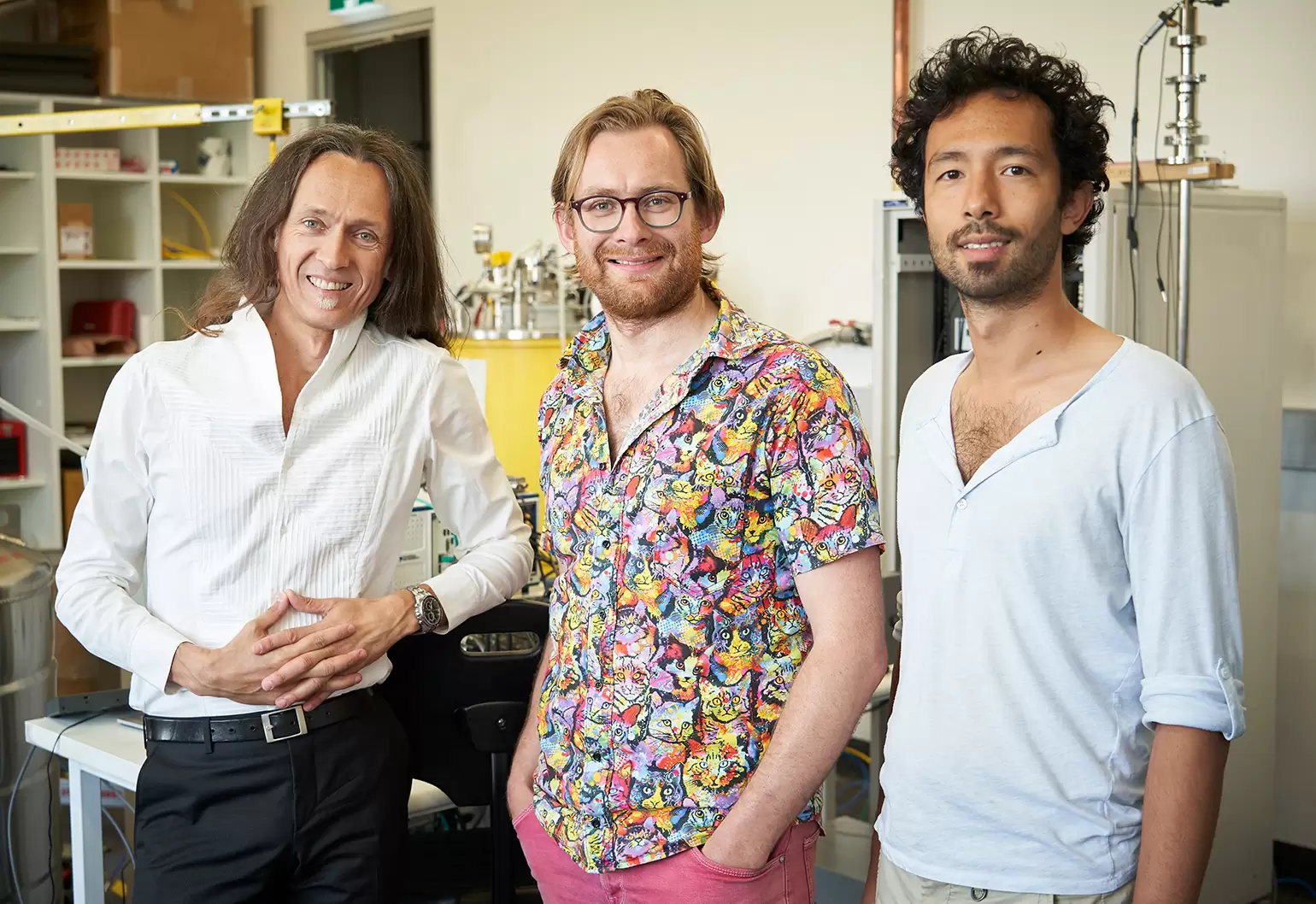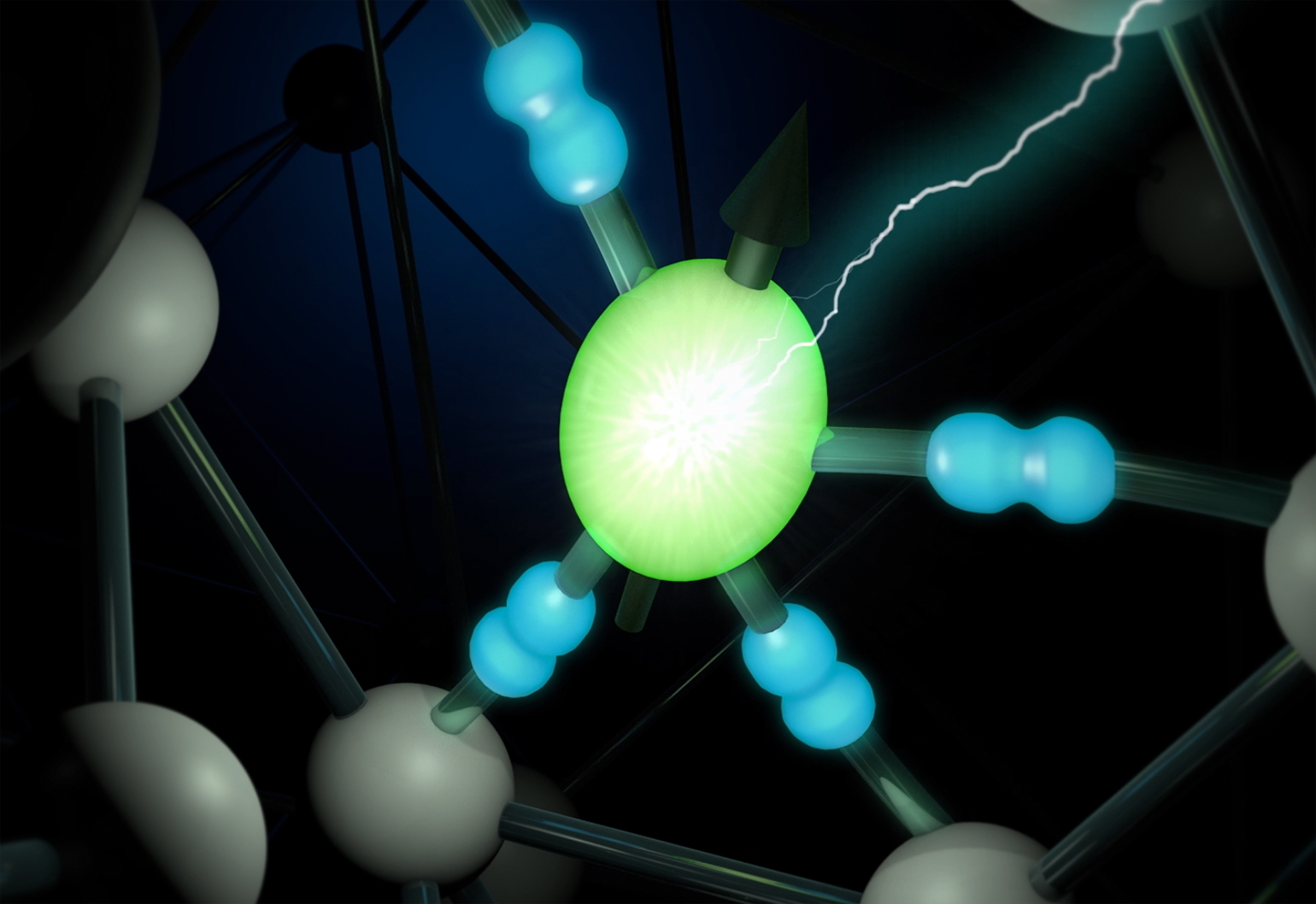Quantum computing could be made more feasible thanks to a subatomic discovery by Australian engineers — and they did it completely by accident.
Engineers at the University of New South Wales (UNSW) have carried out a feat first predicted to be possible more than half a century ago, and according to them it was a happy chance.
Using only an electric field, the team has shown that it is able to control the nucleus of a single atom, an achievement that could have a big impact on fields such as quantum computing and electronic sensors to further scientific inquiry.
Engineers had been able to move nuclei using magnetic resonance, but that approach was far less precise.
“Performing magnetic resonance is like trying to move a particular ball on a billiard table by lifting and shaking the whole table,” said UNSW Scientia Professor of Quantum Engineering Andrea Morello.
“We’ll move the intended ball, but we’ll also move all the others. The breakthrough of electric resonance is like being handed an actual billiard stick to hit the ball exactly where you want it.
Magnetic fields also need large coils and a lot of energy to produce the high currents necessary to sustain them.
The discovery came about when the engineers were trying to use nuclear magnetic resonance to control an atom of antimony. However, in performing the experiment, they damaged their equipment, meaning that they had unwittingly set it to apply electronic resonance rather than magnetic resonance.
“Once we started the experiment, we realised that something was wrong,” said Dr Vincent Mourik, a lead author on a paper published in the journal Nature that described the research.
“The nucleus behaved very strangely, refusing to respond at certain frequencies, but showing a strong response at others.”

A “eureka moment”
Mourik called it a “eureka moment” when the team realised what had happened to the antenna.
“We found that we had actually turned the magnetic antenna into an electric antenna,” explained Dr Serwan Asaad, another of the researchers.
“And in doing so we rediscovered something that Nicholaas Bloembergen had predicted 58 years ago.”
Bloembergen was the Nobel laureate who, in 1961, had first suggested electrical fields could be used to control nuclei.
“I have worked on spin resonance for 20 years of my life, but honestly, I had never heard of this idea of nuclear electric resonance,” Morello said.
“We ‘rediscovered’ this effect by complete accident — it would never have occurred to me to look for it. The whole field of nuclear electric resonance has been almost dormant for more than half a century, after the first attempts to demonstrate it proved too challenging.”
Because this nuclear electric resonance happens at a microscopic scale, it can be applied very precisely; the technology works because the electric field affects the atomic bonds around a nucleus.

inserted in a silicon crystal. A highly localised electric field distorts the chemical bonds (blue)
between the antimony and its neighbouring silicon atoms, and results in a reorientation of
the antimony nucleus. (Image: UNSW/Tony Melov)
A quantum of solace
As a leader in research into quantum computing, UNSW stands to benefit from applying this innovation to its research in this field.
Quantum computing uses the “spin” of individual atomic nuclei as qubits — components in the computer. Because these nuclei exist in a quantum state and only settle on a 0 or a 1 when observed, they can perform billions of calculations in parallel, rather than one at a time like a traditional bit.
That drastically increases their computing power, but it also requires very specific conditions; the fragile quantum state can be disturbed by any number of classical-scale disruptions.
Being able to control atomic spin without drawing on large magnetic fields could cut down on these intrusions.
“This discovery means that we now have a pathway to build quantum computers using single-atom spins without the need for any oscillating magnetic field for their operation,” Morello said.
“Moreover, we can use these nuclei as exquisitely precise sensors of electric and magnetic fields, or to answer fundamental questions in quantum science.”




Any chance this could apply to gravity manipulation? I know nothing about gravity or electric resonance, it’s just something that popped into my head as I read the article.
https://youtu.be/c82QK-2uf7A
You might find this interesting